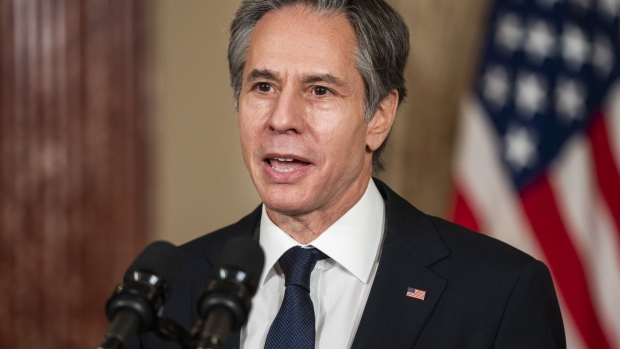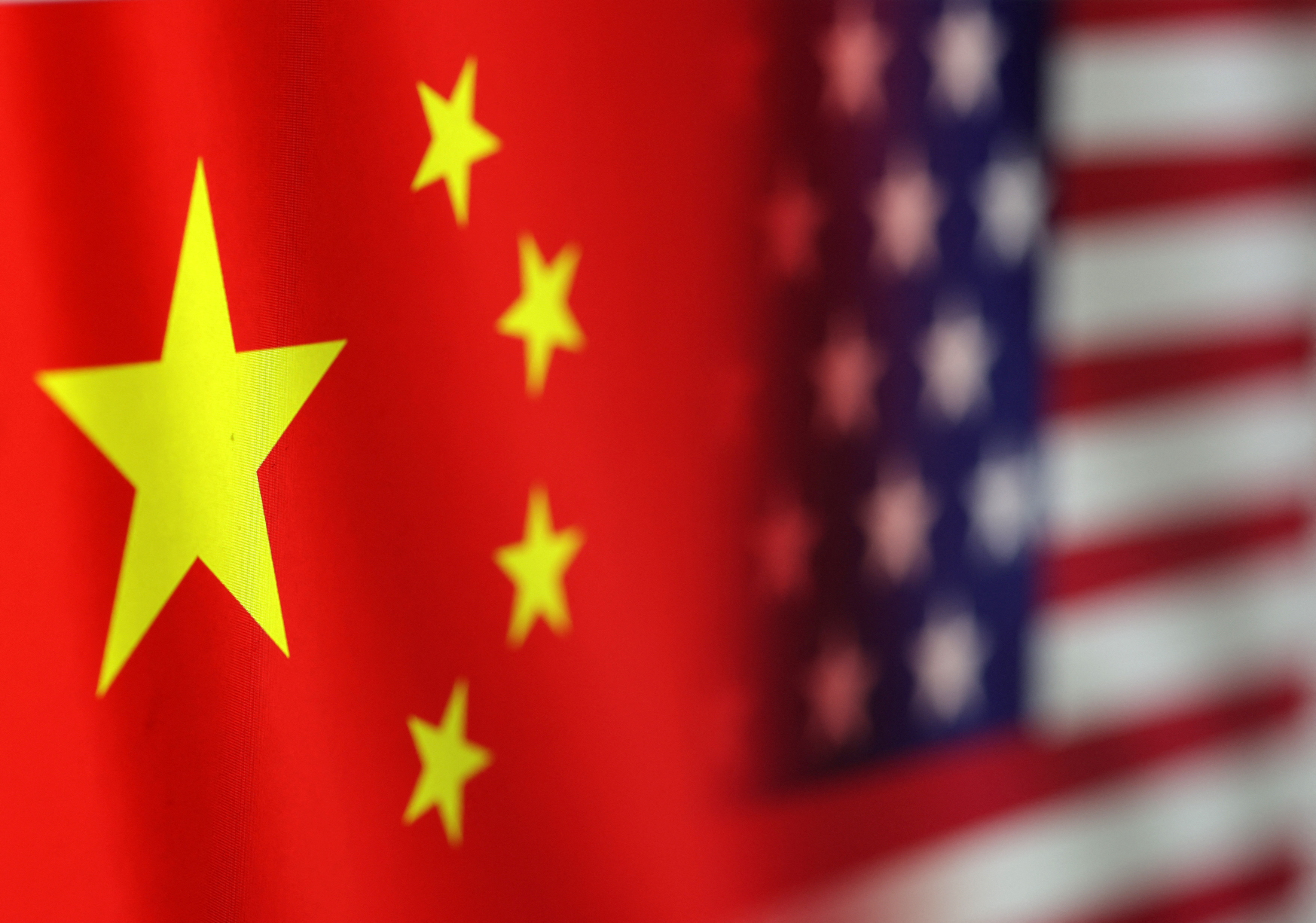From China to Big Sky: The Balloon That Unnerved the White House
, Bloomberg News

(Bloomberg) -- Star gazing is nothing unusual in Montana, where skies go on forever. But as Chase Doak left work on a Wednesday and looked up on a cold winter day he saw a mysterious round white object that was clearly neither the moon or a star.
He began to film something that could come straight out of a movie where science fiction meets the Wild West. Within 48 hours the strange thing that went on to confound the residents of Billings was revealed to be a suspected Chinese surveillance balloon.
“Not gonna lie,” tweeted Doak as his video went viral. “First, I thought this was a #ufo. Then, I thought it was @elonmusk in a Wizard of Oz cosplay scenario. But it was just a run-of-the mill Chinese spy balloon!”
Its journey across the ocean has gripped the world’s attention and forced the top US diplomat to cancel his trip to Beijing. Its fate, as it wafts 10 miles above ground, remains uncertain — as do the delicate relations between two superpowers grasping for ways to deescalate tensions and get talks back on track.
This account of how a balloon burst diplomacy just as Secretary of State Antony Blinken was set to travel to China and meet with President Xi Jinping is based on conversations with several officials briefed on the matter who asked to stay anonymous to discuss intelligence matters.
As it turns out, US authorities were aware the unidentified object that had entered American airspace on Jan. 28, that had then left and re-entered over North Idaho on Tuesday. But with such a high-profile trip at stake, keeping it on the down-low was key.
By the time the thing became visible in Montana, President Joe Biden had already been briefed and the White House was scrambling to decide whether to blast it from the sky.
The gravity of the situation was only exacerbated by Montana being home to Malmstrom Air Force Base, which houses a large portion of the US’s Minuteman intercontinental ballistic missiles.
The Biden administration knew it had to exercise extreme caution especially in what was a heated political environment ahead of 2024 elections, with Republicans agitating on which party could strike a harder or tougher line on China.
As the balloon continued to hover over the Big Sky state on Wednesday, Biden huddled with his national security team to receive a detailed briefing on the balloon. The President argued for shooting the object down, but was urged against doing so by his most senior military advisors.
Secretary of Defense Lloyd Austin and Chairman of the Joint Chiefs of Staff Mark A. Milley insisted that such a move would put civilians at risk, people familiar with the discussions said.
The President ultimately decided to let the balloon continue on its way as the US sought answers from the Chinese embassy in Washington, but they struggled to obtain satisfactory responses. US officials said they were baffled by China, which itself appeared to be caught off-guard by the bizarre incident.
For now, the White House opted not to inform the American public. Events, however, soon forced Biden’s hand.
On Thursday afternoon, the Billings Gazette, a local Montana paper, published a photo of the balloon – meaning it was only a matter of time until national media would pick up on the report and the Biden administration would have to face questions.
The pace of discussions in the White House quickened.
In a call starting at 5:15pm on Thursday, the administration finally went public. That spurred a rush to brief lawmakers on Capitol Hill. The Biden administration will hold a briefing next week for the “Gang of Eight,” a group of lawmakers including the chairs and ranking members of the House and Senate intelligence committees.
In an effort to keep things calm, administration officials stressed this was not the first such incident and that similar activities had been observed over the past several years, including during the prior administration.
The Pentagon’s announcement prompted an outcry from Republicans. Former President Donald Trump posted on his Truth Social website to “shoot down the balloon. ” Others, from former Secretary of State Michael Pompeo to Representative Marjorie Taylor Greene, framed the decision not to shoot down the balloon as a sign of weakness by Biden.
The biggest question was how would China respond to all the furore that was unfolding at a rapid pace as Asia was asleep.
After earlier calling on the US to refrain from “hyping” the incident, China finally commented on the balloon directly in a statement Friday morning Washington time, attributing it to a “force majeure” for which it was not responsible.
China said the balloon blew off course and entered US airspace by accident, adding that it is “regretful” over the incident and that the balloon’s purpose was climate research.
Administration officials are privately dismissive of Beijing’s explanation, as are former American intelligence analysts. The official Chinese explanation mirrored a well-worn excuse for aerial espionage.
“I do not know of anyone who constructs a meteorological balloon the size of three school buses,” said Dennis Wilder, the Central Intelligence Agency’s former deputy assistant director for East Asia and the Pacific.
US officials, who had spent hours debating whether Blinken should scrap a long-planned trip to Beijing, finally felt they had no choice but to postpone the first high-level US visit to China in five years. A delay was not a cancellation. It sent a signal that the US had no desire to escalate matters.
The sentiment among those in the room was that the trip wasn’t worth the potential domestic political costs of going, given that Blinken’s talks in China were not expected to yield much in the first place.
Biden’s team worried that the incident would serve as more fodder for Republicans who believed the administration is weak on China, especially if the balloon crashed and hurt someone while Blinken was in Beijing.
“A split screen of a spy satellite over the United States when Secretary Blinken lands in Beijing would not have been tenable,” said Ryan Hass, a senior fellow at the Brookings Institution and a former Director for China, Taiwan and Mongolia on the National Security Council.
Meanwhile, the balloon continued its voyage eastward across the continental US, heading toward Washington. “The balloon is not going away,” said Wilder, the former CIA officer.
The problem, he said, is that “China has no way to take it back so it will drift over the continental US for an unknown time frame before coming down.”
Until then, Americans will keep taking pictures of it and Biden will have to keep defending the decision not to just shoot it down.
--With assistance from Iain Marlow, Brian Platt and Lindsey Rupp.
©2023 Bloomberg L.P.
China's balloon over the U.S. seen as bold
but clumsy espionage tactic
By Steve Holland, Michael Martina and David Brunnstrom
U.S. and Chinese flags are seen in this illustration taken, January 30, 2023.
WASHINGTON, Feb 3 (Reuters) - China's flight of a suspected surveillance balloon over the United States appears to mark a more aggressive - albeit puzzling - espionage tactic than relying on satellites and the theft of industrial and defense secrets, security experts said.
Both the United States and China have for decades used surveillance satellites to keep an eye on each other from the air. But China's recent balloons - a White House official said this week's episode was not the first - have some in Washington scratching their heads.
"In a way, it's more amateurish," said former White House national security adviser John Bolton. "Do the cameras in their satellites not have high enough resolution that they have to send a balloon over?"
The uproar over the balloon comes as China has been building up its military capabilities and challenging America's military presence in the Pacific. The United States also believes Beijing routinely seeks to capture proprietary information and knowledge from U.S. companies.
China said the balloon was for civilian meteorological and scientific purposes that strayed into U.S. airspace, on Saturday accusing U.S. politicians and media of taking advantage of the situation to discredit China. It has previously rebuffed accusations of espionage and said the United States holds a Cold War mentality and hypes up the 'China threat.'
The balloon discovered this week appeared deliberately provocative, said Dean Cheng, senior advisor to the China program at the U.S. Institute of Peace.
"This is a way to test how does the other side respond, not in a military sense. But politically, what do you do about it? Do you keep it quiet? If there have been in fact many and this is not the first time, then it raises an interesting question. What happened to the previous ones? Did we shoot them down?” he said.
Mike Rounds, a Republican member of the U.S. Senate Armed Services Committee, told Fox News it would be good to recover the balloon to see "if it was designed to actually collect data or if it was designed to test our response capabilities."
Andrew Antonio, co-founder of high-altitude balloon startup Urban Sky, said the wind currents high-altitude balloons depend on for steering on long-distance trips were least favorable in the winter, suggesting China's intentions might not have been be to target any specific location in the United States.
"Specifically targeting a certain military base with that balloon from a launch in China, in January or February, in the northern hemisphere, is very difficult to do, if not impossible," Antonio said, speculating that the balloon's venture into U.S. airspace could have been the result of a failed experiment, or some failure in its self-termination system.
Adding to the questions on Friday night, a Pentagon statement said another Chinese balloon was observed over Latin America.
FBI Director Christopher Wray said in 2020 that the greatest long-term threat to U.S. information and intellectual property was "the counterintelligence and economic espionage threat from China."
China's alleged clamor for American trade secrets has been so sweeping that the FBI estimated last October that it was opening a new Chinese counter-intelligence operation every 12 hours.
A more common spying tactic by China in recent decades, experts say, has been to use graduate students and other individuals with ties to China to gain access to sensitive materials by studying at research universities, working at technology companies or hacking into their computer networks.
"The problem with China is far more in the academic, scientific world," said Mark Zaid, a Washington lawyer who is involved in various national security cases.
"There is no doubt that that dynamic is changing and the Chinese are becoming more aggressive for whatever reason."
The United States has been also been accused of spying by China.
Before the use of spy satellites, the United States used high-altitude aircraft that could not easily be shot down and flew them over the Soviet Union, China and Cuba, for example.
U.S.-China relations plunged in April 2001 when a U.S. Navy EP-3E signals intelligence aircraft collided with a Chinese fighter jet in mid-air over the South China Sea about 70 miles away from China's Hainan province.
In 2009, the Pentagon said five Chinese ships including a naval vessel harassed U.S. Navy ship the USNS Impeccable, an unarmed ocean surveillance vessel, in international waters off Hainan. China said the U.S. ship was carrying out an illegal survey off the island province.
Reporting by Steve Holland, Michael Martina, David Brunnstrom and Joey Roulette; Editing by Heather Timmons, Don Durfee, Edwina Gibbs and Lincoln Feast.
No comments:
Post a Comment